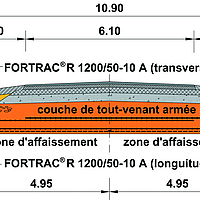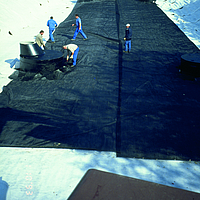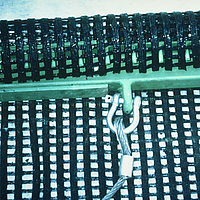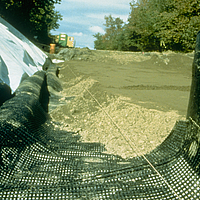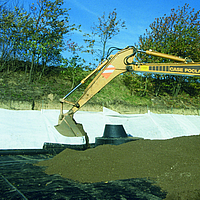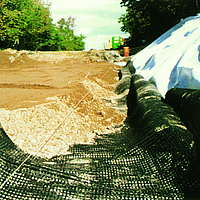Gravel Layer Bridges over Sinkhole
Projekt Informationen
Federal Highway B180
Eisleben, DE
Department of Road Construction, Sangershausen
Teerbau GmbH
1993
Projekt Details
A section of Federal Highway B180 more than 20 meters (65 ft) long at Neckendorf near Eisleben, Germany is now once more in service after being blocked for several years. The roadway was destroyed across its entire width in 1987 by a sinkhole. The sinkhole is located almost on the road axis and is over 30 m (95 ft) deep and 8 meters (26 ft) in diameter. On the surface the sinkhole opening has a diameter of about 20 m (65 ft) which includes the entire width of the roadway and the adjoining shoulder. Although the hole was filled with fill material the danger of a new cave-in due to caverns deep underground still existed. To allow the Federal Highway to put the roadway into operation the opening had to be bridged-over sufficiently to allow no more subsidence more than 10 cm (4 inches) over 30 m (100 ft) of roadway even under heavy truck trafficking.
Solution:
The building sponsor and the planner decided to bridge over the 20 m (65 ft) weak section with a geogrid reinforced gravel/sand layer. The layer was about 60 cm (2 ft) thick by 60 m (200 ft) long, and it’s approximately 11 m (36 ft) width supported the entire road surface. The geogrid reinforcement was installed in three layers. The bottom layer consisted of two 5 m (16ft) geogrid strips laid longitudinally side-by-side. The second layer consisted of a transverse geogrid strip, completely encapsulated and overlapped, resulting in a third reinforcing layer The mesh size is 10 x 10 mm (0.4 in x 0.4 in). The low elongation in combination with the high tensile strength and the good interaction with the sand/gravel mixture guarantees high resistance to subsidence in the event of a new cave-in. The result is an optimal solution from a design engineering and cost point of view. This project is the first instance in which high-tech Aramid geogrids were used in Germany for road construction. The reinforced layer was prepared within a few days in October 1993.
This design provides effective reinforcement against longitudinal and transverse deflection as well as torsion. The flexible geogrid is composed of very low elongation, low creep Aramid fibres with total tensile strength of 1200 kN/m (82,224 Ibs/ft) and only 3% elongation.

